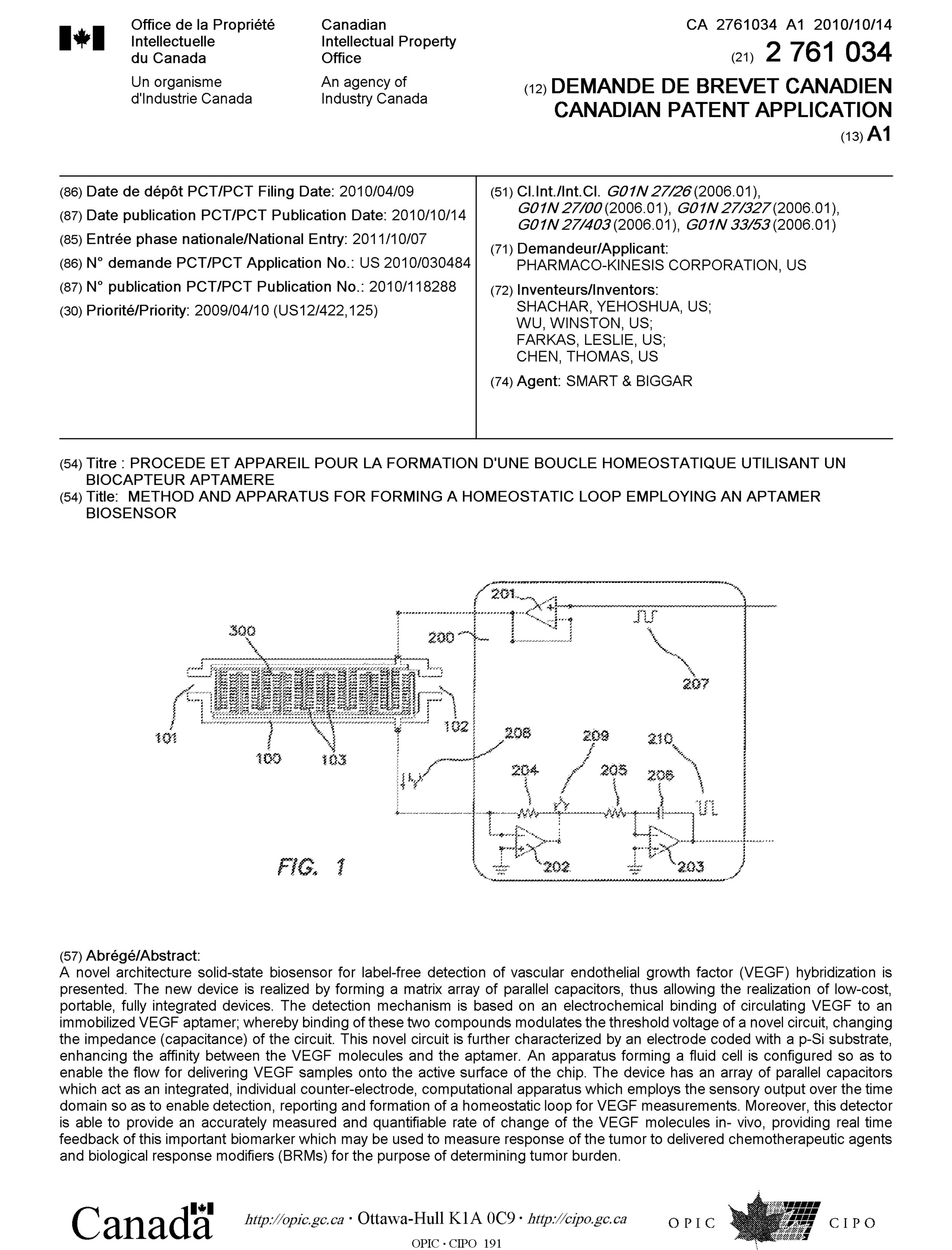PATENTS
Method and Apparatus for Forming a Homeostatic Loop Employing an Aptamer Biosensor
Patent Number: CA 2 761 034
Date Filed: October 14, 2010
Country Filed In: Canada
Product Application: Aptamer Biosensor
Description:
A novel architecture solid-state biosensor for label-free detection of vascular endothelial growth factor (VEGF) hybridization is presented. The new device is realized by forming a matrix array of parallel capacitors, thus allowing the realization of low-cost, portable, fully integrated devices. The detection mechanism is based on an electrochemical binding of circulating VEGF to an immobilized VEGF aptamer; whereby binding of these two compounds modulates the threshold voltage of a novel circuit, changing the impedance (capacitance) of the circuit. This novel circuit is further characterized by an electrode coded with a p-Si substrate, enhancing the affinity between the VEGF molecules and the aptamer. An apparatus forming a fluid cell is configured so as to enable the flow for delivering VEGF samples onto the active surface of the chip. The device has an array of parallel capacitors which act as an integrated, individual counter-electrode, computational apparatus which employs the sensory output over the time domain so as to enable detection, reporting and formation of a homeostatic loop for VEGF measurements. Moreover, this detector is able to provide an accurately measured and quantifiable rate of change of the VEGF molecules in- vivo, providing real time feedback of this important biomarker which may be used to measure response of the tumor to delivered chemotherapeutic agents and biological response modifiers (BRMs) for the purpose of determining tumor burden.
Field of Use: The VEGF biosensor is part of Josh Shachar's exploration into developing next-generation biosensors that are capable of detecting specific biomarkers within a sample at clinically relevant levels in a simple portable point-of-care-device that can provide physicians and health-care workers rapid and affordable pathogen detection without the need for a dedicated lab and specialized technicians and all the associated cost therein. As described, the VEGF biosensor would be targeted to helping physicians treating cancer tumors with chemotherapeutic to be able to measure biological response modifiers (BRMs) for the purpose of determining treatment efficacy.

